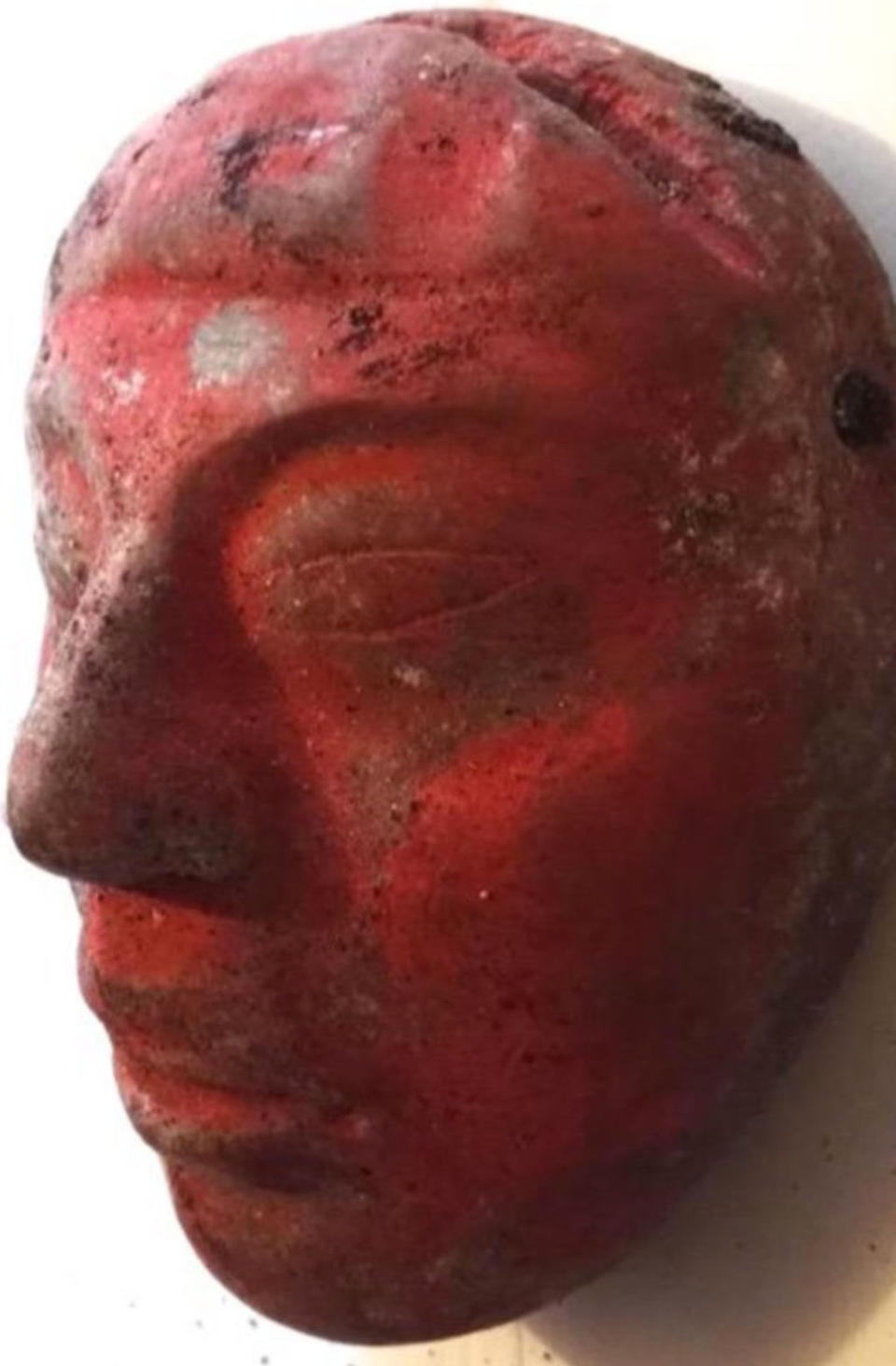1,000-Year-Old Tomb of Maya King Discovered in Guatemala
Archaeologists digging under a Maya palace in Guatemala say they have opened the tomb of a royal and found a jade mask and bones, both painted bright red.
The tomb was unearthed at the site of El Perú-Waka' in the rainforest of northern Guatemala. Though the dense city was filled with hundreds of buildings, including pyramids, palaces, plazas and houses, it was only rediscovered in the 1960s, when petroleum workers stumbled upon the ruins.
The site was occupied during the Classic Maya period (from around A.D. 200 to 800), and it had close ties to the nearby Maya rival capitals Tikal and Calakmul. A wealthy royal family once ruled Waka' and controlled what was a major trade route along the San Pedro River. [See Photos of Another Mayan Tomb]
A team of American and Guatemalan archaeologists have been excavating Waka' since 2003. They've found several burials of kings and queens (as well as some potential human sacrificial offerings).

In the latest finding from this past summer, the researchers tunneled beneath the city's palace acropolis and found what might be the oldest royal burial at the site. Based on the style of pottery found at the tomb, they think the burial dates to A.D. 300-350.
David Freidel, a professor of anthropology at Washington University in St. Louis and co-director of the excavations, explained in a news statement that the king's tomb would have helped to make the royal palace holy ground for the Wak (or "centipede") dynasty. "It'slike the ancient Saxon kings [of] England buried in Old Minister, the original church underneath Winchester Cathedral," Freidelsaid.
Freideland his colleagues believe the tomb likely belonged to a king because of the red-painted jade mask depicting the ruler as the Maize God, with his forehead inscribed with a symbol that meant"yellow" and "precious" in the ancient Mayanlanguage.
The grave also contained several ceramic vessels, shells and a carved crocodile pendant. The tomb had been reopened at least once sometime after A.D. 600, perhaps so that future generations of mourners could paint the ruler's bare bones red with cinnabar. (Painted bones have been found in Maya tombs before, such as the tomb of the Red Queen in Palenque, which was completely covered in cinnabar dust.)
There were no inscriptions in the tomb to reveal the ruler's name, but Freidel and his colleagues suspect he could be King Te' Chan Ahk, a known Wak dynasty king who ruled during the early fourth century.
Original article on Live Science.


